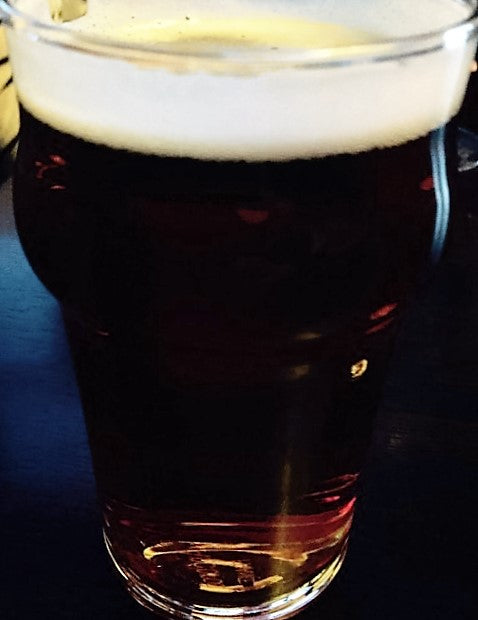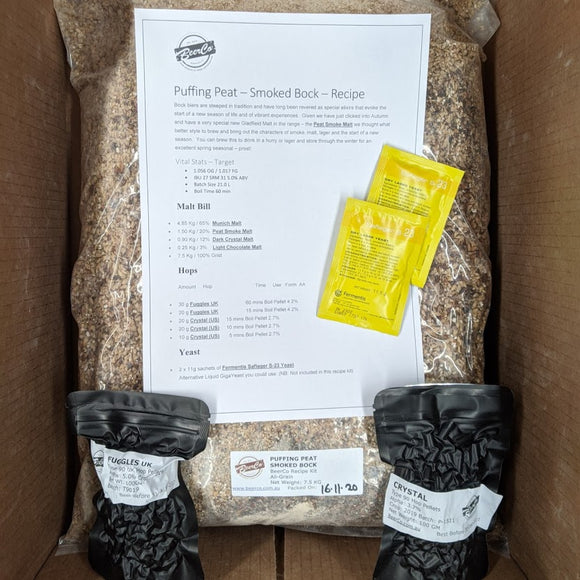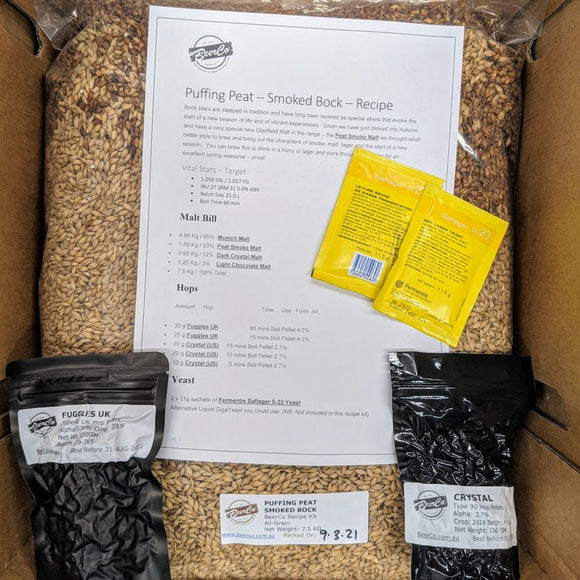Bock biers are steeped in tradition and have long been revered as special elixirs that evoke the start of a new season of life and of vibrant experiences. Given we have just clicked into Autumn and have a very special new Gladfield Malt in the range - the Peat Smoke Malt we thought what better style to brew and bring out the characters of smoke, malt, lager and the start of a new season. You can brew this to drink in a hurry or lager and store through the winter for an excellent spring seasonal - prost!
Brewfather app recipe link
an All Grain Smoked Bock recipe
Vital Stats - Target
Malt Bill
- 4.85 Kg / 65% Crisp Dark Munich Malt
- 1.50 Kg / 20% Gladfield Peat Smoke Malt
- 0.90 Kg / 12% Crisp Dark Crystal 400 Malt
- 0.25 Kg / 3% Crisp Low Colour Chocolate Malt
- 7.5 Kg / 100% Grist
Hops
Amount Hop Time Use Form AA- 30 g Fuggles UK 60 mins Boil Pellet 4.2%
- 20 g Fuggles UK 15 mins Boil Pellet 4.2%
- 20 g Crystal (US) 15 mins Boil Pellet 2.7%
- 20 g Crystal (US) 10 mins Boil Pellet 2.7%
- 10 g Crystal (US) 5 mins Boil Pellet 2.7%
Yeast
Dry | Fermentis
- 2 x 11g sachets of Fermentis Saflager S-23 Yeast
Liquid | Bluestone Yeast
Mash:
- Single Infusion mash with ration of water:malt of 3:1 at at 66-68°C / 22.5 Litres of Water to 7.5 Kg of Grain
Sparge:
- Fly sparge with 12.5 litres water at 75 C. Make up the boil to 23-25 litres depending on your boil off rate to finish with 21 Litres in your primary fermentation vessel.
Mash:
- 60 minutes rolling boil is sufficient. You are welcome to do a 90 minute boil but note hop additions starting at 60 minutes.
Fermentation:
- Pitch Yeast at 12C and let rise to 15C
- Diacetyl rest for 72 hours prior to bottling or kegging after primary and secondary fermentation and/or racking at maximum end of Yeast tolerance range (read instructions).
Brewing Aids:
- 1/2 tab of Irish Moss or 4 gram of Polycar Brewbrite into the boil @10 mins [not included in kit]
- A capsule of Servomyces Beer Yeast Nutrient into the boil @10 mins
Fermentation & Storage & Serving:
- Fermentation temperature has a major effect on diacetyl production. Higher temperatures produce more diacetyl but also reduce it more quickly. Alternately, cooler fermentation temperatures produce lower concentration but do not reduce it as much, which inevitably leads to longer storage times required to bring the diacetyl below the flavor threshold.
- Option 1: Ferment at 8°C for three days. Raise to 10°C for three days. Raise to 13°C. Rack into secondary when gravity reaches less than 1.020. Cool to 5°C and ferment to 1.017 (about three more days). Age at 5°C until clear (seven to 14 days). Bottle and prime. Condition in the bottle as long as desired (30 to 60 days)
- Option 2: We will leave you to pick what works best for your brewery. Fermentation can be completed in 7-10 days at 12-15°C using Fermentis S-23 Saflager. Recommend pitching according to manufacturer’s instructions on reverse of packet at rate of 2 packets of dried yeast to 23L of fresh cooled wort or a single pitch of Bluestone Yeast. If using S-23 Saflager start fermentation at 12°C and let it free ride up towards 15°C before racking and diacetyl rest for 72 hours after primary fermentation, then chilling to clear up and drop out the yeast in the secondary fermenter.
- Keg or Bottle and lager for 4-6 weeks ideally at 10-12°C to carbonate to 2.7 volumes of C02 then lager if time permits for 4-6 weeks at 0-2°C and serve in a delightful lager glass – cheers!



